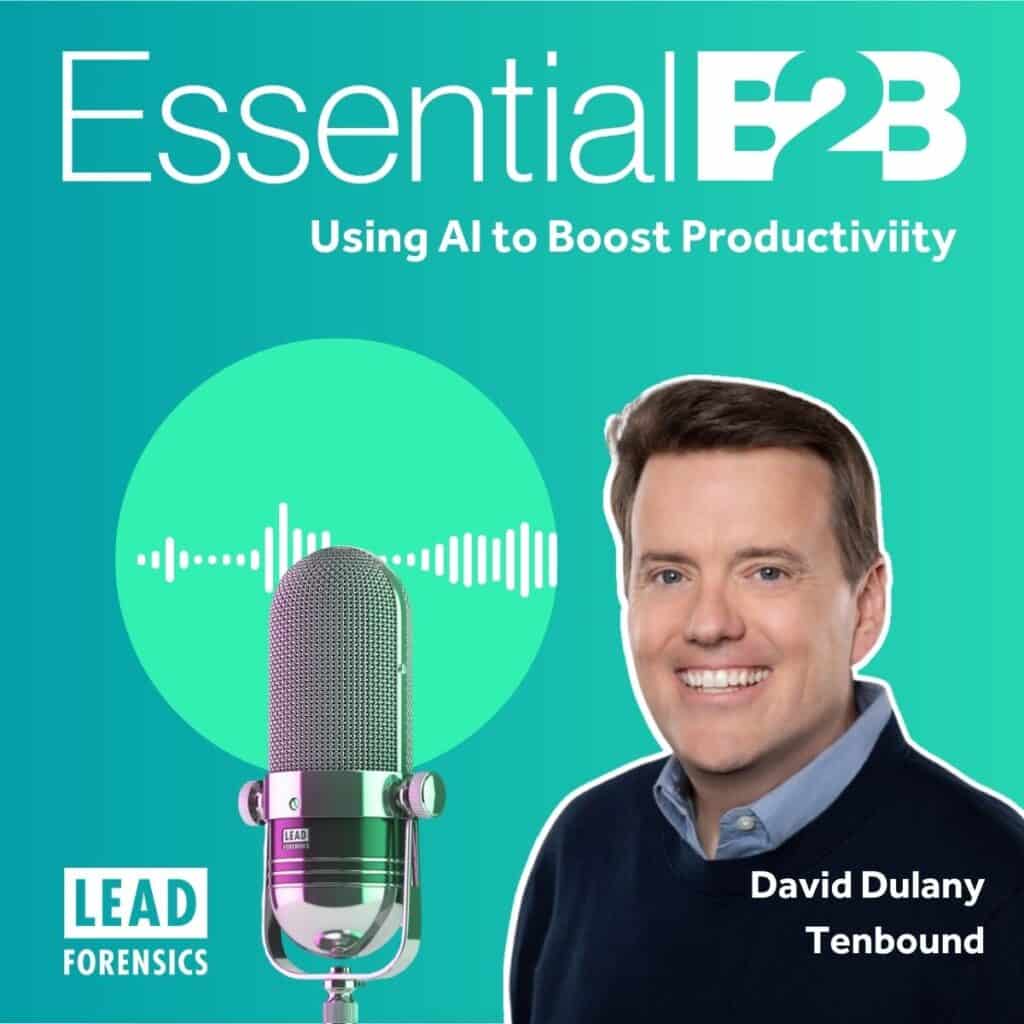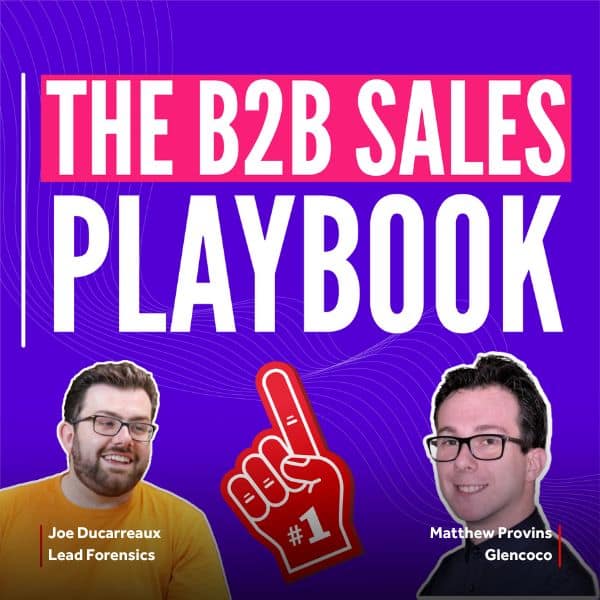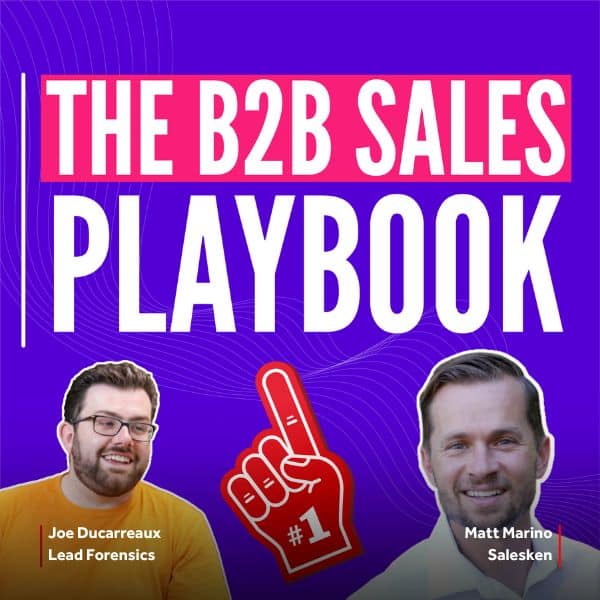The Best of Essential B2B (Part Two)
The best bits of the Essential B2B Podcast from the first half of the year (part two).
Related Podcasts



Transcript
Transcript
Hello and welcome to the Essential B2B Podcast brought to you as ever by Lead Forensics. I am your host, Joe Ducarreaux. This week I am bringing you Part 2 of the Best of The Essential B2B Podcast for H1. You will hear from a plethora of guests all giving top tips and sharing some of the lessons we’ve learnt over the past 6 months on the podcasts.
So without further ado, here are more highlights from the Essential B2B Podcast from H1 2023.
Joe: So Matthew, if there was one key lesson you’d like everybody to take away from this discussion we’ve had this afternoon, what would that key piece of advice be?
Matthew: Don’t forget about the companies that aren’t ready for you yet.
Joe: Absolutely! I suppose if it is that 90% margin that we were estimating, that’s still quite a lot of people isn’t it.
Matthew: And that 90% is likely to become the 10% at some point. So by the time they become that 10% you already want them to be thinking about you and know who you are and think you are wonderful and eb excited to work with you.
Joe: If there’s one golden rule that you would like everybody who is watching this to go away and think about when it comes to branding, what is that golden rule for you?
David: Storytelling and remembering it’s always humans that we’re dealing with. It doesn’t matter if you’re dealing with a brand, a business or whatever it is, it’s always the human you have to appeal to. In Polar, the idea that we are one. We have the saying we are one Polar, it means we are like one organism, one team. We have to move in the same direction, we have to read from the same book. Going back to storytelling, the collaboration between marketing and sales is linked because if marketing comes up with the right story that sales believe in and can easily pitch to prospects that helps them appeal to the human emotion at the other end.
Joe: Philipp, my final question for you, if there was one tip, one take away you’d like listeners to take away from this conversation, what would that top tip be?
Philipp: One tip that I would say to everyone, before you go into conversation whether it’s at work or out of work, make sure you are in the right mindset. One thing I do every single time is, I just shake my body before any meeting. Just shake every single part of my body and that way you are there fully present with that other person. If you are present, you can have the most beautiful conversation. If you are not present and thinking about other stuff, it’s very hard. So make sure to shake out your body just one or two minutes before the next meeting and you’ll see how much impact it can have on your conversations.
Joe: So Clark can you give us some tips on how you would get started on using AI particularly for a B2B business?
Clark Boyd: There are lots of good ways to get into this. I understand that it feels like it’s one of those strange situations. You could do anything, so you end up doing nothing. A lot of the things you read will say it’s just down to your imagination or literally anything is possible now. A lot of people think I haven’t really played with this kind of tool before, I don’t really know where I’m going with it. And you go in and I’ve actually found it…….. When I first got access to ChatGPT I thought I’ve got nothing to ask this thing, what do I want to know. I started just asking questions like who’s going to play left wing for Leeds United this Saturday, it didn’t know that so I was oh. But I should be thinking about these things more so I was okay, it’s not like a Magic 8 ball. It doesn’t know anything about the future so how can it help me? You probe around a little bit and one of things I found really helpful with it, as marketers at any business whether it’s B2B, whether it’s a small or a huge business, just as individual marketers trying to think about how this technology works.
There are two big ways to do it. The first and certainly easiest way is go into ChatGPT, or Dolly2 or Stable Diffusion, the image ones and think about something you would like it to do. Something you would love to achieve, it could just be say you write a newsletter and you are trying to think of 5 angles for a story. So you just put in, start off with the really basic, start off with the shortest version you can and say brainstorm 5 ideas on this topic for my newsletter. Then look at the output, then you will see okay it doesn’t understand my audience, it doesn’t know anything about that. It doesn’t know anything about my newsletter, those topics are way too broad. So you might go in and refine it and say I write a technology newsletter for marketing executives, come up with 5 ideas on this topic but go beyond the obvious cliches and use the examples I gave you.
It will go a little bit weirder with them after that. You could even say what are the most popular topics with my audience and it might go and fetch you some information about those. You can go down that path and see what are the little modifiers in the prompt that will help you understand how it is working in the background because then you can get a lot more done with this. You can come up with template prompts that you use and you can share with your team and say right if you are looking to brainstorm say this, this is how it understands who we are and what we do and it will get you the results that you need.
The second thing though and I think this is much more powerful. I think this has really, really helped me build using these tools actually. Research the APIs, so they have documentation on the APIs on Open AI and it is very, very clear and gives you lots of use cases and it says you can use the technology that powers things like ChatGPT and like Dolly, it’s open for you to use as well. What those tools are is just a user interface. ChatGPT is a slightly different API that isn’t open to the public yet but it will be soon. What they are doing is, they are essentially wrapping it up, we call it an API wrapper. It just wraps the API call that a user with no programming experience can just type in, how do I brainstorm 5 ideas? If you are only using it that way the ideas that you come up with will probably be let’s make a chatbot or let’s make a content creation machine or whatever else.
If you think about it the other way around, which is I’ve got a challenge, I need to solve it, could Open AI help me get there? Then you can look at what the Open AIs can help you do and figure out ways to get you to that point.
So what I would advise people to do as a way into this is, beyond reading just that documentation, it’s short, it’s easy to use, it’s step by step and anyone can just get started. It will generate an API key for you and then you can go away and input that and if you get stuck do what I do. Just ask ChatGPT. I’m trying to do this using your API, it’s not working, how do I fix it? It will literally tell you what to do and if it doesn’t work, go back and just keep trying.
I have it open all day and if I hit a snag with coding I will just copy and paste the error into ChatGPT and it will give me the right code that will get me out of the error. That’s how helpful it can be.
But before you dive into all of that, look at your day to day work, look at what you are trying to do for the next quarter for example and just pick one thing. So it could be the emails that you are writing. Could you get those drafted by using ChatGPT and pull that into your emails so that it would be there so you could edit it and send it. Or do you need to research 10 new prospects. How could you use Google Sheets with the Open AI API to go and fetch information about these companies? Because you could just type in the name of these companies, hit enter and it would go and find everything you need and populate the spreadsheet for you. All of these things are really possible at the moment but the best way to get into it is think of something you really want to do and then you will be curious enough to get to the end point.
You can look at my Linkedin and my Twitter. I’ve shared a couple of things I’ve built just in the last few days with interactive marketing personas and image generation and things like that, just for training purposes so I can show people how to use these APIs. It was amazing for me working through that process, it made me realise this is the best way in. Pick a problem, use ChatGPT to help you out, read the documentation and then you’ll be able to build something and you don’t need to code, you don’t need to do anything like that at all. You just need a bit of curiosity and an idea.
Joe: One top tip you’d like people to take away from this chat
Celine: One top tip I would suggest is to really take care of oneself. Not in a selfish way, I am not here for anybody anymore but in a generous way. Be generous with yourself. If you need to rest, rest. If you need to go out, go out. If you need to eat that piece of chocolate, go and eat it – without guilt. The world is pretty hard on us and there is all this anxiety about politics and the environment and all that kind of thing. We are aware of the rise of mental health issues, let’s take good care of ourselves because if we don’t we won’t be able to be helpful to anyone around us.
Well there you go, I hope you enjoyed a refresher of just a few of the things that we learnt on the podcast this year. Remember to subscribe to the Essential B2B Podcast and give us a 5 star rating where possible.
We’ll be back next week with another Essential B2B podcast.


